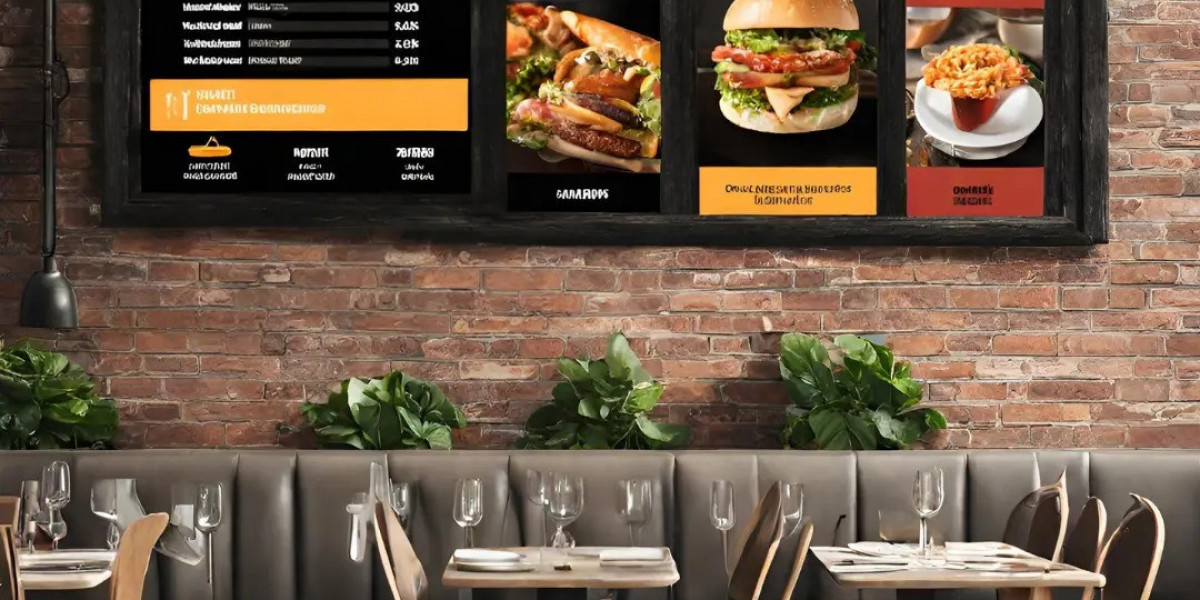In today's competitive restaurant industry, creating a memorable dining experience is paramount. One innovative way to enhance customer experience is by utilizing TV menus. This dynamic approach can not only modernize your restaurant’s ambiance but also improve customer satisfaction and operational efficiency. Here’s how you can leverage TV menus to elevate the dining experience in your establishment.
1. Engage Customers with Visual Appeal
TV menus provide a visually appealing and dynamic way to present your offerings. High-definition images of your dishes can make them look more appetizing and enticing. Use high-quality photos and videos to showcase your menu items. A well-shot video of a sizzling steak or a colorful salad being prepared can stimulate customers’ appetites and encourage them to try new dishes.
Tips:
Hire a professional photographer to capture your dishes in the best light.
Use vibrant colors and dynamic content to grab attention.
Regularly update visuals to reflect seasonal specials or new items.
2. Improve Menu Clarity and Accessibility
A well-designed TV menu can improve the clarity and readability of your offerings. Unlike traditional printed menus, TV menus can use large fonts and clear, high-contrast text that is easy to read from a distance. This is especially beneficial for customers with visual impairments.
Tips:
Use a clean, easy-to-read font.
Ensure high contrast between text and background.
Highlight specials and bestsellers for quick decision-making.
3. Enhance Customer Interaction with Real-Time Updates
One of the significant advantages of TV menus is the ability to update them in real-time. Whether you’ve run out of a particular item or are introducing a daily special, you can instantly reflect these changes on your TV menus. This ensures customers have the most up-to-date information and reduces the chances of disappointment when an item is unavailable.
Tips:
Use digital signage software that allows easy updates.
Regularly train staff on how to make quick changes to the menu.
Promote time-sensitive deals, such as happy hours or lunch specials, to attract customers during off-peak hours.
4. Showcase Your Brand’s Personality
TV menus offer a platform to infuse your brand’s personality into your customer experience. Whether your restaurant has a fun, quirky vibe or a sophisticated, elegant ambiance, your TV menus can reflect that. Use themed graphics, animations, and messages that align with your brand identity.
Tips:
Design your menus to match your restaurant’s decor and theme.
Include fun facts about your dishes or ingredients to engage customers.
Display customer reviews and social media feeds to create a sense of community.
5. Educate and Entertain
TV menus can serve dual purposes: informing customers about the menu and entertaining them while they wait. Consider adding sections that explain the origin of certain dishes, cooking methods, or nutritional information. This not only educates but also keeps customers entertained, reducing perceived wait times.
Tips:
Create short, engaging videos about your dishes and ingredients.
Display trivia, fun facts, or cooking tips related to your menu.
Rotate content regularly to keep it fresh and interesting.
6. Promote Upselling and Cross-Selling
TV menus can be strategically designed to promote upselling and cross-selling. Highlight combo deals, suggest add-ons, and feature premium items prominently. This not only increases your average order value but also enhances customer satisfaction by helping them make informed choices.
Tips:
Use eye-catching graphics to highlight add-ons and combos.
Display recommendations for drink pairings or side dishes.
Rotate promotional offers to keep customers engaged and interested.
7. Provide Multilingual Support
If your restaurant serves a diverse clientele, TV menus can easily support multiple languages. This ensures all customers can comfortably navigate your menu and make their selections without language barriers.
Tips:
Use digital signage software that supports multiple languages.
Include a language selection option on your TV menus.
Ensure translations are accurate and professionally done.
8. Enhance Efficiency and Reduce Wait Times
TV menus can streamline the ordering process, especially in quick-service or self-service environments. Clear, concise menu layouts help customers make decisions faster, reducing wait times and improving the overall flow of your restaurant.
Tips:
Organize menu items logically, grouping similar items together.
Use clear visuals and descriptions to minimize questions and confusion.
Implement self-service kiosks integrated with your TV menus for faster service.
9. Integrate with Your Marketing Efforts
TV menus can be an effective tool for promoting your marketing campaigns. Display information about loyalty programs, upcoming events, or special promotions directly on the menus. This ensures that all customers are aware of these initiatives without the need for additional printed materials.
Tips:
Feature QR codes that customers can scan for more information or to join loyalty programs.
Advertise seasonal promotions or limited-time offers prominently.
Use animated content to draw attention to special campaigns.
Conclusion
Implementing TV menus in your restaurant is a forward-thinking move that can significantly enhance the customer experience. By focusing on visual appeal, clarity, real-time updates, and brand personality, you can create a more engaging and efficient dining environment. Additionally, TV menus offer opportunities for upselling, multilingual support, and integration with your marketing efforts, making them a valuable tool in today’s digital age. Embrace this technology to stay ahead of the competition and provide your customers with an unforgettable dining experience.







